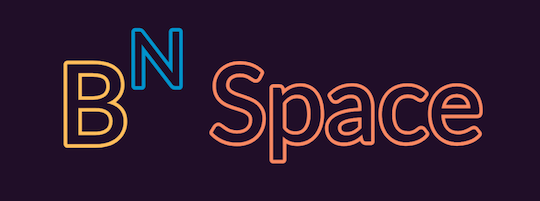Ethereum Merge
Post last updated: September 24, 2022
The merge and the aftermath
On September 15 at exactly 8:45 am Berlin Time, the Ethereum move to Proof of Stake occurred and run without any issues. Media around the world applauded Ethereum for its great achievement as a leading example of turning a crypto project environmentally friendly. The transition from proof-of-work (PoW) to proof-of-stake (PoS) also made individual investors and institutions across centralized finance (CeFi) and DeFi interested in benefiting from rewards previously reserved for miners. "In the past month, the ETH liquid staking derivatives have received a ton of attention, and titans of the industry — including Coinbase and Frax — have released ETH liquid staking derivatives.
Liquid staking derivatives offer all the benefits of regular ETH while also being a yield-generating asset. That means holders can gain exposure to ETH’s price action and maintain liquidity while harnessing staking benefits. Wallets holding stETH will see their holdings gradually increase as staking yields are regularly added to the initial sum." (Cointelegraph)
what's Ethereum staking https://www.forbes.com/advisor/in/investing/cryptocurrency/what-is-ethereum-staking/
Despite all the excitement preceding the merge, almost 18 hours later, the price dropped around 17%. ETH depreciated more than most of the top coins in the week past the merge dropping below its 100dMA and going towards its 200wMA. Most of the coins were gaining against ETH.
Two weeks after the merge, the price continues to fall. As far as the tech goes, staked ETH cannot be unstaked and no one knows when withdrawals of sETH will become possible. Ethereum developers first reported the update would be a part of the next hardfork, the Shanghai upgrade, which was supposed to happen in six to twelve months after the merge. At the moment the date of the update and if the withdrawal solution will be included are both ambiguous.
The upside of potential profits not only from a price increase but also via staking yield has led many users to stake ETH. Project founders from DeFi to NFT integrated stETH into their protocols. Now everyone is in blank and the ETH developers seem not to prioritise adding withdrawals in a foreseeable time manner. One of them even mentioned in a Discord conversation he considers "other things that are far more critical to the long term health of Ehthereum than stakers being able to withdraw in 2023 rather than 2024." With government spending more and more time and resources to control crypto and the largest stakers being government-controlled companies like Coinbase, the government could decide the faith of those sETH's before their owners can withdraw.

Ethereum catches the eye of regulators
Ether’s New ‘Staking’ Model Could Draw SEC Attention. SEC chairman Gary Gensler says the system used by Ether following software updates could trigger securities laws. He also noted that cryptocurrencies and intermediaries which allow holders to ‘stake’ their coins might pass a key test used by courts to determine whether an asset is a security. https://www.wsj.com/articles/ethers-new-staking-model-could-draw-sec-attention-11663266224
This could be potentially detrimental to Ethereum-based projects, Presearch being one example. In general, the move while it makes Eth itself more useful as a token, especially when using liquid staking, it means projects built on Ethereum will lose its utility value.
Would users stake the project token or simply stake ETH? erasing too much value and moving it to the protocol itself might not be a great thing to attract more projects. We know DXDY moved to build on Cosmos exactly for that reason among others of course.
Eth would suck the value of its tokens and gain some momentum at first, but eventually, projects would want to have their utility value so they would move somewhere else. This leads to abandoning the main chain and losing value after all.
What's next for Ethereum - Wired interview with Vitalik Buterin
The merge laid a path for further technical improvements and greater adoption. Vitalik and the team have ideas on how to solve the scalability issues which make transactions expensive.
"The reason why is this architecture where every node in the network has to personally verify every single transaction. We have ideas around technologies to fix that and turn Ethereum into a system that processes transactions in a way that's still decentralized, but a lot more efficient."
The plan is the upgrade the existing Ethereum's two-layer scaling model which in turn will allow the chain to process a much larger amount of data.
"And then there are these separate protocols that take that data as an ingredient and create kind of like mini-Ethereums inside of Ethereum, on top of that. These together would be able to process a much larger number of transactions. Instead of the roughly 20 transactions per second that Ethereum can process today, potentially between 5,000 and a 100,000 transactions."
The merge made the planned changes easier.
2020/2021 Was a bubble and Ethereum wasn't mature enough at that time.
"Transaction fees on Ethereum got up to $5 and even $20 per transaction last year, and if there is another big price bubble we could easily see fees go up to $100 or $200." For that reason, Ethereum is now not yet where it once wants to be helping the developed world and including everyone who wants to use it for transactions.
In regards to NFTs, Vitalik believes those with a use case will stay.
"Another interesting use is the whole NFT gaming space. Games like Axie Infinity were really successful last year, but then Axie Infinity got hacked. Even aside from that, it hasn't really been able to recover." The creators counted mostly on the financial aspect to make the games entertaining. Vitalik stresses that games should be made fun even without the financial aspect.


